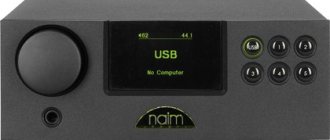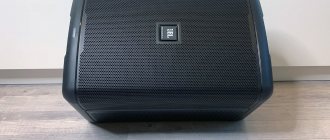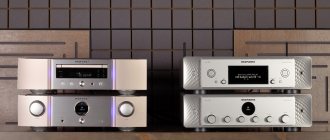Repair, Dear Customer, Safety Precautions
Page 2
- Image
- Text
Security measures
Dear buyer!
Thank you for purchasing this Technics product. To ensure optimum performance and safety, please read these instructions carefully.
Content
Accessories………………….. 2 Safety precautions…………………2 Connections………………………….. 3 Names of components….. 3 Operation………………… ……….. 4
Technical specifications…..4
Accessories
The following explanation corresponds to the illustration (page 2) in the operating instructions. Refer to that picture to better understand the explanation.
Power cord…………………………………..1pcs
Connecting cable for remote control………… 1 piece
Location
Avoid placing the device in places exposed to: • direct sunlight; • high temperatures; • high humidity; • high vibrations; • on uneven surfaces.
(Install the machine on a flat, level surface.)
Such conditions may damage the machine's cabinet and/or other components and shorten the life of the machine.
Installation
Never place heavy objects on top of the machine or on the power cord.
Voltage
'Very dangerous to use
high voltage AC power supply
current, such as powering air conditioners.
This connection may cause a fire. DC power supply cannot be used. Be sure to check the current source, especially on ships or other places where direct current is used.
Precautions for
using the power cord
• Avoid cuts, scratches and
connection of the power cord as this may result in fire or electric shock. You should also avoid excessive
bending, pulling or cutting the cord.
• When unplugging from the outlet, do not pull
cord as this may result in electric shock. When turning off the power, firmly grasp the plug.
• Never touch the fork while it is wet.
hands to avoid getting
serious electric shock.
Foreign objects
> Make sure that no
foreign objects, such as needles, coins, screwdrivers, etc. accidentally entered the device through the ventilation holes. Otherwise, you may receive a serious electric shock or the machine may be damaged.
• Be extremely careful about getting hit
water or other liquids onto or into the apparatus. as this may result in fire or electric shock. (If this happens, immediately unplug the power cord and contact your dealer.)
• Avoid spraying near the device
insecticides, as they contain flammable gases that can ignite.
• Do not use to clean the device.
insecticides, alcohol, paint thinners and other similar chemicals,
as they may cause the finish of the case to peel or become dull
Repair
• If you have problems with this
device, then never try to repair it yourself. disassemble or remake. Failure to comply with this warning may result in serious electrical shock.
• If problems occur during operation of the machine
(the sound disappears, the indicator lights go out, smoke appears, etc.), immediately consult your dealer or an authorized service center.
• Turn off the power to the machine unless
use it for a long time. Otherwise, its service life will be reduced.
ATTENTION
Do not place a cassette deck or CO player on the unit. Heat radiated by the surface
this device may become
caused by a malfunction of the cassette deck or CO player.
NOT!
WARNING
THIS UNIT SHOULD NOT BE INSTALLED OR PLACED IN A BOOKcase, built-in closet, or other confined space in order to preserve
CONDITIONS OF GOOD VENTILATION. ENSURE THAT CURTAINS AND OTHER SIMILAR OBJECTS DO NOT OBSTRUCTE NORMAL VENTILATION TO PREVENT THE RISK OF ELECTRIC SHOCK OR FIRE DUE TO OVERHEATING.
For Russia
INFORMATION ABOUT PRODUCT CERTIFICATION
B202
Technics SE-A5 - have you heard the powerhouse sing?
The Technics SE-A5 is one of the most beautiful amplifiers ever created in the audio world.
Its appearance evokes associations with Hi-End. The front panel is a solid display with huge arrows swaying rhythmically to the beat of the music, creating an unforgettable show. When I first saw the Technics SE-A5 power amplifier, I was truly mesmerized. I thought that this device should (literally must) sound absolutely enchanting and if there is a Hi-End device, then it should definitely be a device from this category, save up and buy it and there will be happiness and Hi-End nirvana.
Actually, this is logically true, Technics, at one time, presented a line of 3 top-end devices - A5, A3 and A1.
The beginning of the line was set by the most ambitious Technics SE-A1, worth 1 million Japanese yen, weighing 51 kg, released in 1977.
Don't rub your eyes, the A2 preamp actually costs even more than the power amplifier - a fantastic 1,600,000 yen!
In 1979, a newer and more affordable Technics SE-A3 model was released, incorporating developments from the A1. The Power A3 weighed 35.2 kg and cost an impressive 300,000 yen.
And finally, in 1980, a model was released that incorporated developments from both A1 and A3, and also received modified circuitry with feedback. All three power amplifiers were direct current (DC) amplifying devices.
The A5 turned out to be the cheapest device in this top line - 150,000 yen and it also weighed quite “modestly” - 18.4 kg.
The device used a New Class A circuit - the advantages of low distortion of pure Class A, but in a circuit where it does not exist (Class A). As the power amplifier brochure says:
New Class A offers Class A low distortion and Class B efficiency.
One of its interesting features was the presence of two inputs - DC and Normal.
If you connected the source via DC, then the sound came in a path without capacitors, preserving as much as possible all the features of the original, and a special complex system monitored the lack of constant output. DC is the main and most audiophile amplifier mode.
The Normal input implemented the classic signal path, including coupling capacitors. To the ear, this was expressed in the presence of a certain veil on the sound, which, sacrificing a little detail, gave greater “musicality” when listening, “melody.”
At first I preferred the DC mode only when listening for its higher musical resolution, but later I suddenly liked the sound in the Normal mode. In any case, there is a choice, there are two options to suit the taste of the listener.
One of the unusual features of the Technics SE-A5 power generator was its operating mode. The amplifier could operate either at full power 160W + 160W (4Ω, 0.003%) actively consuming electricity and heating up, or limiting itself to power 40W + 40W (4Ω, 0.003%). It is unusual that it was possible to switch the amplifier from one power consumption mode to another... by turning on the display backlight.
With the backlight turned on, the Technics SE-A5 delivered a maximum output of 160 watts per channel into 4 ohms or 120 watts into 8 ohms. But when you turned off the backlight, the power switch switched to 40/30 watt (4/8 ohm) mode.
The button performing this action bore the inscription Output power with two values - Full and Limited.
The characteristics of the device are really impressive.
At rated power, harmonics had negligible values of 0.003% (20Hz ~ 20kHz, 4Ω), 0.002% (20Hz ~ 20kHz, 8Ω). Frequency gain range 5Hz ~ 100kHz (THD 0.007%). The signal to noise ratio is excellent - 123 dB. Damping factor 140.
I would also like to note the fact that when the device is limited to a power of 30-40 watts, then these are the purest and most powerful watts without distortion (which, by the way, is more than enough to sound a room in an apartment), since at this moment the power consumption of the device is not 30 watts at all, it is quite a decent 100 watts. At full power, consumption is 330 watts.
As the amplifier manual explains this point, this is done so that in the evening the backlight does not interfere with listening and in the evening such high power of the device is not needed.
My Technics SE-A5
The weight of the powerhouse is not a record, but quite decent - 18.4 kg. And if you consider that it does not contain the mass of switching scrap metal that is found in a conventional integrated amplifier (because all this is placed in a separate preamplifier unit), then the weight of almost 20 kg does not seem small.
Of course, there are power units that are much heavier; you don’t need to look far for an example, this is the Technics SE-A3, for example, weighing 35.2 kg. But this weight is also explainable. The A3 output power is an impressive 320 watts per channel at 4Ω, 20Hz ~ 20kHz, 0.003%. All these are more powerful transformers, of course. But why do you need 320 watts in an ordinary apartment, considering that we usually listen at volumes of 5-15 watts?
Technics SE-A3, what's under the hood
For example, the well-known acoustics 35AC-012 “Radiotehnika S-90” had a rated power of 35 watts and, as we know, successfully sounded even quite impressive dance floors.
As for the additional expenses for purchasing an A6 preamplifier for the Technics SE-A5, in my practice I successfully use the A5 without a preamplifier. On the back of the powerhouse there is an adjustment for the volume knobs. I'm not even talking about such moments that you can also use volume control from an CD player or software player if you are using a computer. In general, there are no problems with this.
What nuances did I find out in communicating with Technics SE-A5? First of all, it seemed to me that the device was designed for “vinyl”. Those. it fully matches the manner and musical resolution that we usually get from a vinyl record player. This is a natural sound, not as ultra-detailed as on CD, but smooth and emotional. The musical resolution is more of an average level than a high one, which makes it similar to such an excellent device, a similar powerhouse, the Pioneer M-90.
Pioneer M-90
All in all, we have a Technics SE-A5 power amplifier with amazingly high performance, reasonable power consumption and no capacitors in the audio path when using the DC input. It remains to find out what's going on with the sound.
LISTENING TO TECHNICS SE-A5
While studying a fairly large amount of information on audio from primary sources, I more than once came across two ways to create audio equipment. The first path is obvious - the best characteristics of audio equipment, taking it to new heights.
But there was, although not so often, another option, which was given to engineers as a task - this was the creation of musical-sounding equipment that primarily conveys emotions and sensations. Those. here the human experience of actually listening and feeling the beauty of sound was brought to the fore. You will say that this is nonsense and I made it up or I am following the myths that fill the Internet. But no. I will give as a clear example, for example, the creation of Sony SS-G9 acoustic systems, where the key goal was not sound resolution, but rather a subjective sense of the reality of a sound event. And that is exactly what the result was.
Sony SS-G9
If we judge formally, then these were speaker systems that were not of the highest musical resolution, the same Sony could and did achieve greater detail in other models, but the G9 were the flagship, the face of the company, because they “sounded” and that’s how they were designed - carrying a natural “live” sound resolution, the kind that you hear at a real concert, and not in a studio, where the distance from the instrument to the saxophone is measured in centimeters.
The fabric of your clothes vibrated from the movement of air in the lower register, the scale of the reproduced work performed by the G9 (and even the smaller G7) was grandiose, as if you were in a concert hall before the BSO performance. Sony succeeded in this regard.
There are other examples showing that sometimes a company, when creating, focuses not only on top characteristics, but also on something ephemeral, which can only be felt by a living person during real listening.
Technices SE-A5 was created in the pre-digital era (1980), before the advent of the CD (1982), it was a development of the audio thought of the grandiose previous powerhouses A3 (1979) and A1 (1977) and it is completely clear that the sound source to which these devices are oriented - vinyl or tape. And as I see it, its concept is the creation, first of all, of a musical device, although the characteristics are sky-high.
When listening from a CD, the Technices SE-A5 will show you amazing three-dimensional images of an acoustic guitar, trails of after-sounds at a natural, “live” musical resolution, that is, identical to the concert one.
Kenwood DP-7090
After CD quality with studio recordings, many are accustomed to hearing all the subtlest aspects - the creaking of a chair under the musician, the bubbling of saliva in the throat, but the Technices SE-A5 does not focus on this, it gives an “experiential” image focused on the musicality of the presentation.
The device performs well primarily on vinyl (an external phono stage or preamp is required), or, as in my case, on vinyl rips. We can say that sound from vinyl/vinyl rips is the strong point of the Technics SE-A5.
When the vision of the Technics SE-A5 and the source from that time come together, magic arises - a musical, immersive sound. Dire Straits, Yello, Eric Clapton - wonderful, atmospheric. The presentation is not inviting to analyze the audible sounds, you simply swallow the musical canvas without chewing, you swallow and that’s not enough for you, you want to hear that same acoustic guitar again. This is simply beautiful music with a background presentation, but reproduced on high-end equipment of very high quality with all that it implies.
While researching the topic, I found a foreign owner online who was literally a fan of the Technics SE-A5 model and only of it. Once upon a time, in ancient years, he already had such a powerful one, and with the advent of the power of ebay, he was able to buy another one of these (only MK II), and later bought a couple more. In total, it seemed to me that he has 4-5 A5 devices at home, which he is happy to use daily along with several pairs of speakers.
In summary, the sound of the Technics SE-A5 can be noted as a more “background”, non-intrusive presentation with natural, but not ultra-high musical resolution. His attraction to the media and sources of that time - vinyl, reel-to-reel - it is with them that the most synergistic, most exciting result is obtained. There is also complete harmony with DACs or CD players on multibits. I used the Lite DAC-AH DAC for listening with 8 TDA1543 stereo chips - Dire Straits left an impression.
Technics SE-A5 from the inside
In conclusion, I’ll add that as speaker systems I used top-end Diatone DS-1000 with boron-titanium midrange and high-frequency domes and an aramid low-frequency diffuser, from 1983. The resulting system had its own charm and taste, especially when using vinyl rips.
I deliberately did not go into the specifics of the so-called new class A in the Technics SE-A5, which is its key feature, perhaps more about this some other time, but the topic was to talk about an interesting and beautiful power amplifier that has delighted our world by his appearance.









